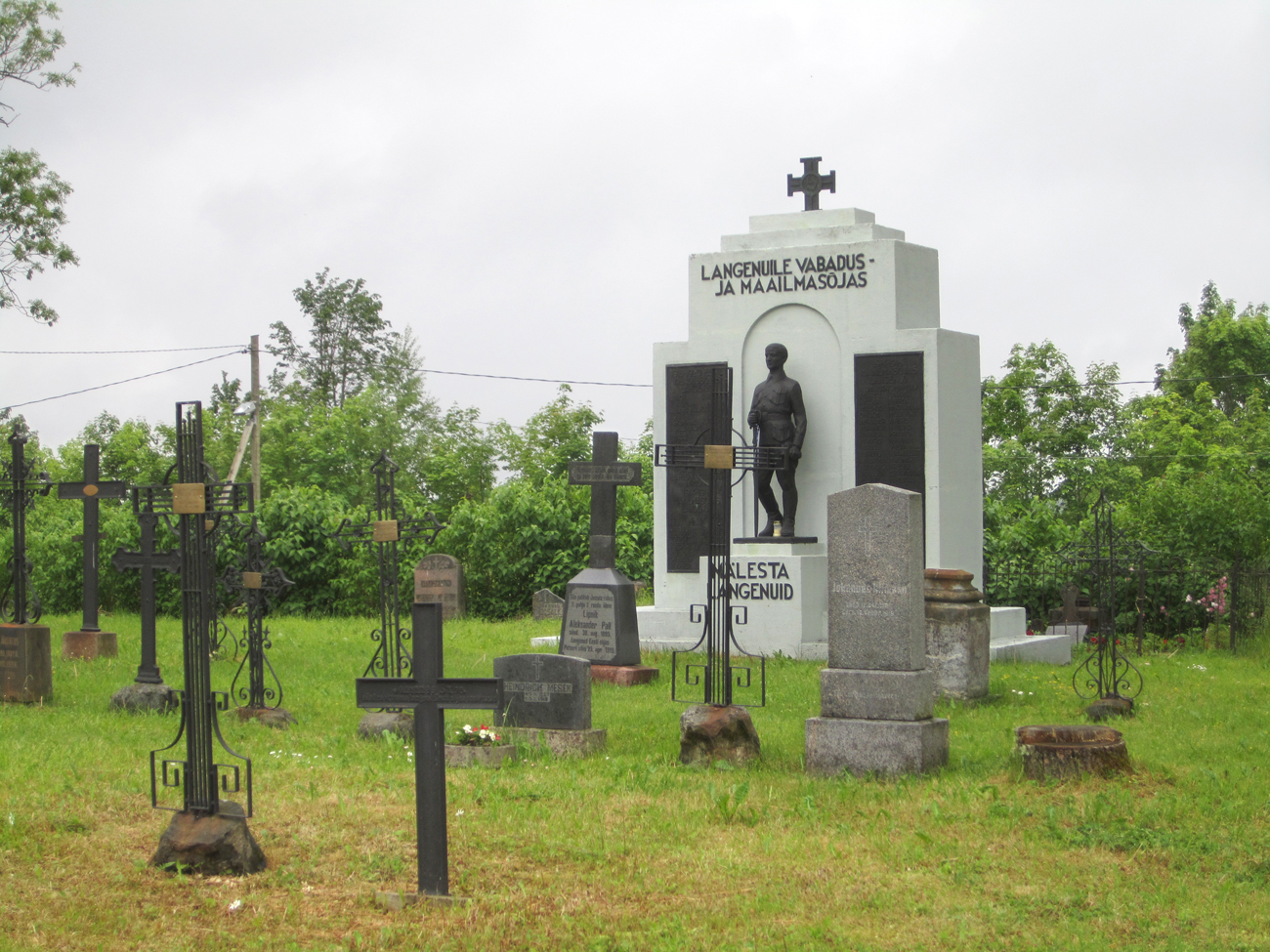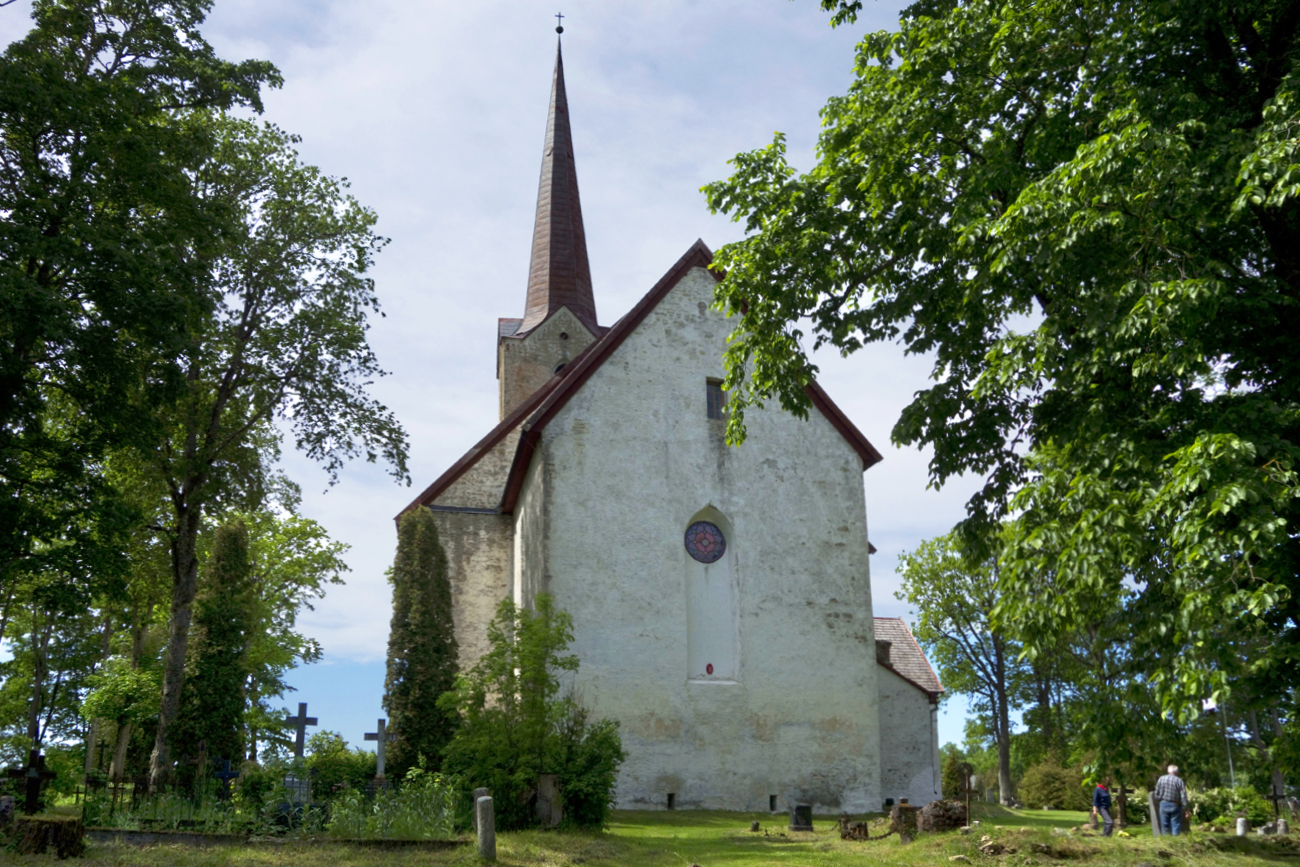Järva-Peetri St Peter’s Church
The ancient centre of Järva County was located in the Järva-Peetri parish, in Kareda village. The first written data about the church are from 1253, when the Bishop of Tallinn and the Teutonic Order signed an agreement; among the witnesses was also the priest of Ämbra. This is how Peetri church and parish were initially called. The oldest Estonian rural churches were always called after their location. Using a saint’s name may indicate a change in location. We cannot thus be certain if Ämbra church actually stood in the same place as today’s Peetri Church. This could be established only by means of thorough archaeological excavations. However, dedication to St Peter, head of the Christian congregation and the first pope of the Catholic church, indicates the status and old age of the church.
Most of the Teutonic Order’s properties in Järva County were located in Järva-Peetri parish, and the border was guarded by the Paide Order Castle. It is therefore likely that the church was under the patronage of the Order. This could have been the reason why the western tower initially reached only a little bit above the nave wall – according to an agreement with the Danes, the Order was not allowed to build fortifications. Peetri Church is the largest in Järva County, probably erected at the beginning of the 14th century.


In 1868, the church acquired the tallest tower in all the county, build after the design of Johann Gottfried Mühlenhausen. The master builder came from Põltsamaa and was the most prolific builder and re-designer of Lutheran churches in the 19th century. He provided many churches in southern Estonia and Järva County with new, Neo-Gothic appearance, especially agreeable to the Lutheran clergy of the time, who also funded all construction work. In earlier centuries, it was the local manor lord who had to look after the church in every way. Peter Stormkrantz, the first manor lord of Köisi who was a lieutenant-colonel of the Swedish crown, evidently had to do this too. He died in 1669 and is buried underneath the church chancel. The Baroque tombstone of Peter and his wife is excellently preserved. Some chandeliers in the church date to the same period, although the 19th century furnishings clearly dominate.
Before leaving the churchyard, the visitor should have a look behind the sacristy corner an old wheel cross, which belongs to two farmers – Odrese Andres and Andrese Mart. This cross could originate in the Swedish era. Such crosses have survived in several churchyards, meaning that there were Estonians who were able to read and write.
Kersti Markus, 2017
Heinrich Stahl, a prominent clergyman and man of letters, served as a pastor at Peetri (St Peter’s) in 1623– 1633. He wrote the first textbook of Estonian language plus a dictionary (1637). Stahl’s main work „Käsi- ja koduraamat Eesti vürstkonna jaoks Liivimaal” (Manual for Estonian principality in Livonia) was published in 1632–38.
In 1766–1780, the pastor was Johann Friedrich Rinne, who published a book of sermons in Estonian in 1779.
In 1916–37 the post belonged to Christoph Wilhelm Beermann, an ardent nationalist. He was among the students who took part in consecrating the Estonian blue-black-and-white flag in Otepää vicarage in 1884.
There is a monument in the churchyard to those killed in the War of Independence and in the world war; there is also the square of the Estonian flag (C. W. Beermann’s flag square).

Looking around in the churchyard and the cemetery, we notice a tombstone which says: Carl Espenberg, who sailed around the world in 1803–1806. What a surprise! Such discoveries are the real gems on any trip.
Carl (Karl) Espenberg, allegedly of Estonian origin, was born in 1761 in Haljala parish. In 1803–1806 he participated as a ship doctor in the first Russian round-the-world voyage, led by Adam Johann von Krusenstern. Espenberg was the Krusenstern family doctor. Other participants included the future admiral Fabian Gottlieb von Bellingshausen and the future explorer Otto von Kotzebue (son of the writer August von Kotzebue) who was employed as a cabin boy.
Espenberg’s recollections of this voyage were published in 1809–12. He was an excellent doctor, his methods were simple and efficient. He insisted on buying fresh foodstuff at every harbour, everyone had to consume a daily dose of garlic brew – in order to prevent scurvy and other likely diseases on a long voyage. Upon their return to Kronstadt, men enjoyed good health and many had even put on weight. Tsar Alexander II knew how to be grateful – Espenberg received an annual salary of 1000 roubles, which was a fortune in those days.
Later Espenberg worked as a doctor in Tallinn and was much respected. Carl Espenberg died in 1822 in Huuksi manor that belonged to the Grünewaldt family.
Incidentally, there exists Cape Espenberg by the Kotzebue Sound on Seward Peninsula on Alaska’s western coast. The cape was named after Espenberg by his good friend Kotzebue on his next voyage around the world.
Daila Aas, September 2017

The saint of Peetri (St Peter's) Church
Saint Peter was a disciple of Jesus, one of the twelve Apostles, whom Jesus asked to spread the Christian message. When the son of a Galilean fisherman Simon became a Christian, Jesus called him Peter, which means a rock.
Peter was the first among the disciples to acknowledge Jesus as the son of God, the Messiah. After Jesus was imprisoned, Peter nevertheless renounced him, just like Christ had foreseen Peter’s behaviour and later regrets.
Peter was also the first among the Apostles to whom the resurrected Christ revealed himself.
After the ascent of Christ into heaven Peter became the leader of the early Church, he carried out missionary work in Samaria, Antioch, Corinth and elsewhere, being the first to preach to pagans. He was also the first Apostle to perform miracles.
Peter became the first Bishop of Rome, i.e. the Pope. The words of Jesus were fulfilled, „and I tell you that you are Peter, and on this rock I will build my church” (Mt 16, 18).
Peter died in Rome in the year 64 (or 67?) as a martyr. According to a legend, the most significant Roman Catholic Church, St Peter’s in Rome, was built on the grave of Peter.
St Peter is the patron saint of popes, also of fishermen. In art he is mainly depicted with a short curly beard, wearing a toga or papal robes. Peter’s iconographical image is a rooster, a ship or a fish, but his most important saint’s attributes are the keys.
Sources
Heino Gustavson. Karl Espenberg (1761–1822) – Eesti arstiteaduse ajaloost. Koostanud Viktor Kalnin. Tartu Ülikooli kirjastus, 1996.
https://register.muinas.ee/public.php?menuID=monument&action=view&id=14996
